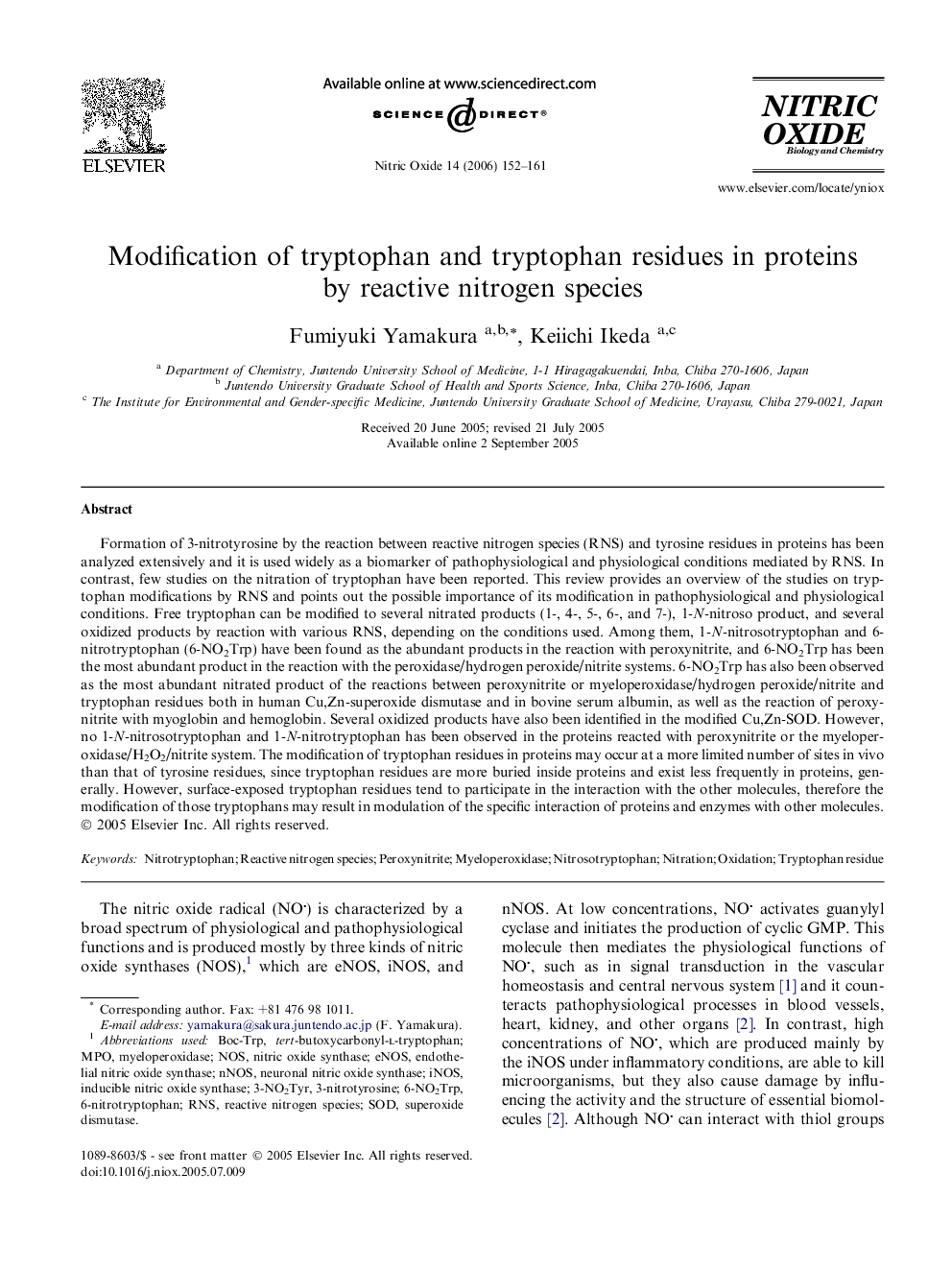| کد مقاله | کد نشریه | سال انتشار | مقاله انگلیسی | نسخه تمام متن |
|---|---|---|---|---|
| 2002075 | 1066085 | 2006 | 10 صفحه PDF | دانلود رایگان |

Formation of 3-nitrotyrosine by the reaction between reactive nitrogen species (RNS) and tyrosine residues in proteins has been analyzed extensively and it is used widely as a biomarker of pathophysiological and physiological conditions mediated by RNS. In contrast, few studies on the nitration of tryptophan have been reported. This review provides an overview of the studies on tryptophan modifications by RNS and points out the possible importance of its modification in pathophysiological and physiological conditions. Free tryptophan can be modified to several nitrated products (1-, 4-, 5-, 6-, and 7-), 1-N-nitroso product, and several oxidized products by reaction with various RNS, depending on the conditions used. Among them, 1-N-nitrosotryptophan and 6-nitrotryptophan (6-NO2Trp) have been found as the abundant products in the reaction with peroxynitrite, and 6-NO2Trp has been the most abundant product in the reaction with the peroxidase/hydrogen peroxide/nitrite systems. 6-NO2Trp has also been observed as the most abundant nitrated product of the reactions between peroxynitrite or myeloperoxidase/hydrogen peroxide/nitrite and tryptophan residues both in human Cu,Zn-superoxide dismutase and in bovine serum albumin, as well as the reaction of peroxynitrite with myoglobin and hemoglobin. Several oxidized products have also been identified in the modified Cu,Zn-SOD. However, no 1-N-nitrosotryptophan and 1-N-nitrotryptophan has been observed in the proteins reacted with peroxynitrite or the myeloperoxidase/H2O2/nitrite system. The modification of tryptophan residues in proteins may occur at a more limited number of sites in vivo than that of tyrosine residues, since tryptophan residues are more buried inside proteins and exist less frequently in proteins, generally. However, surface-exposed tryptophan residues tend to participate in the interaction with the other molecules, therefore the modification of those tryptophans may result in modulation of the specific interaction of proteins and enzymes with other molecules.
Journal: Nitric Oxide - Volume 14, Issue 2, March 2006, Pages 152–161